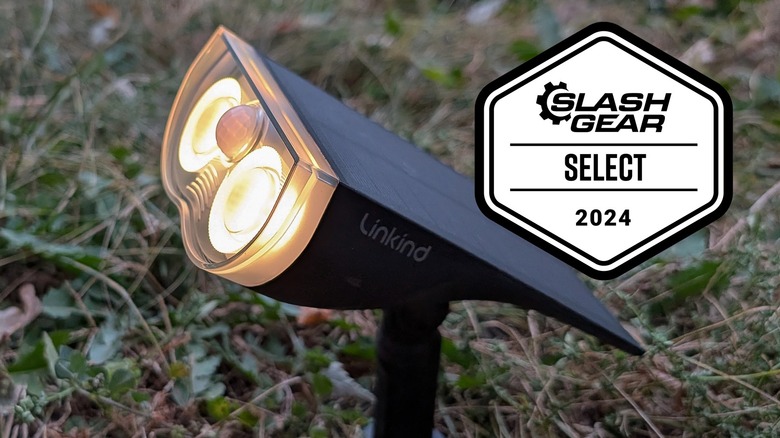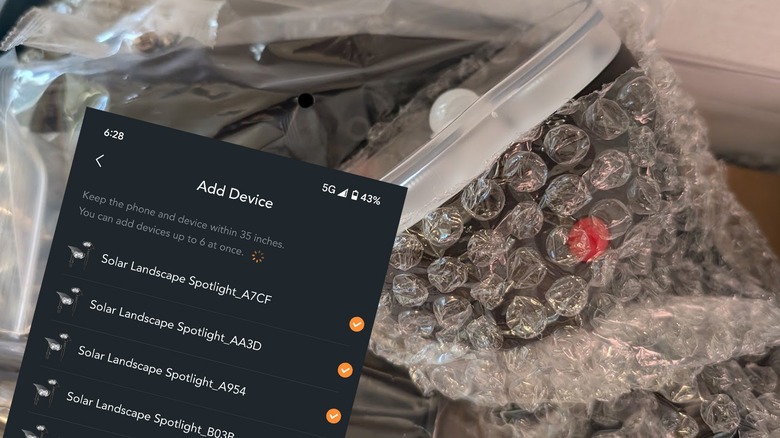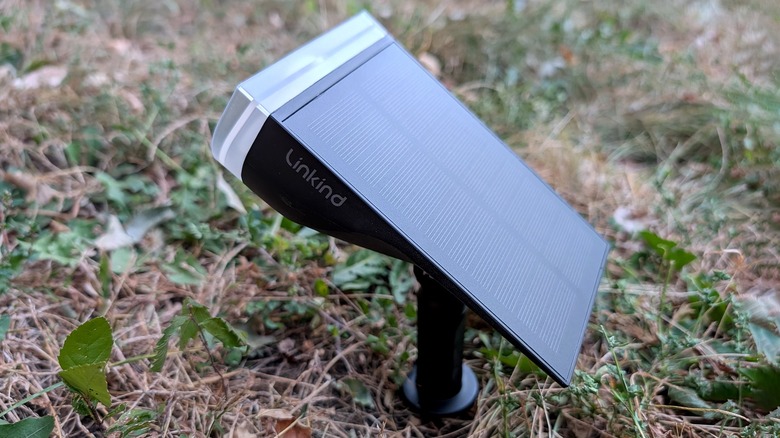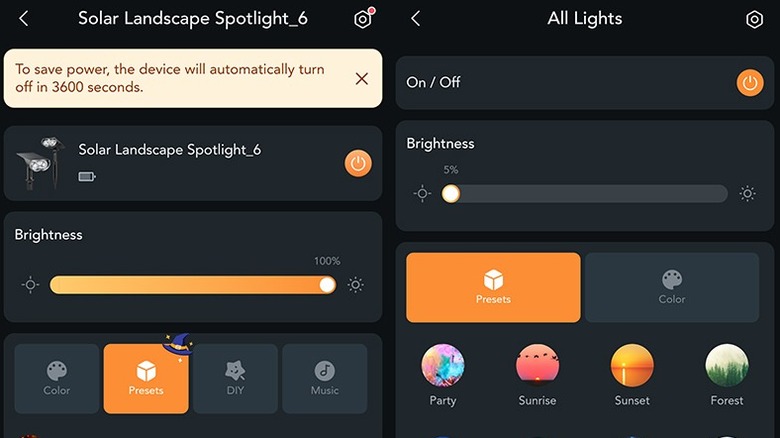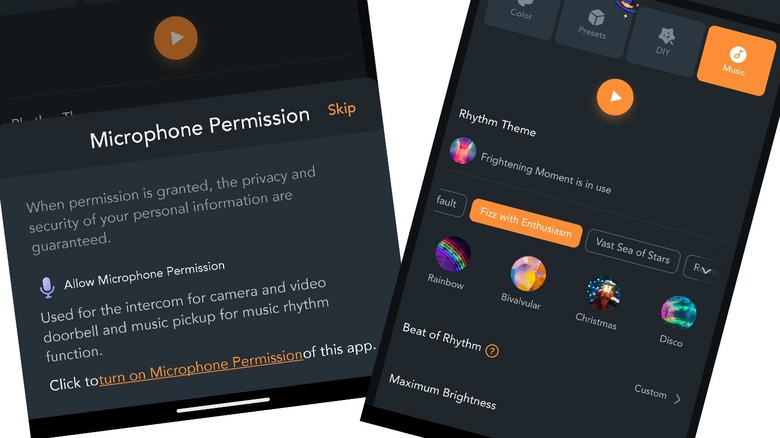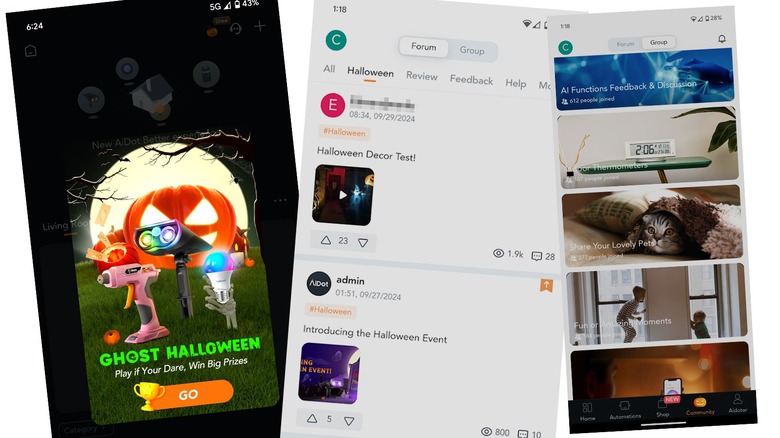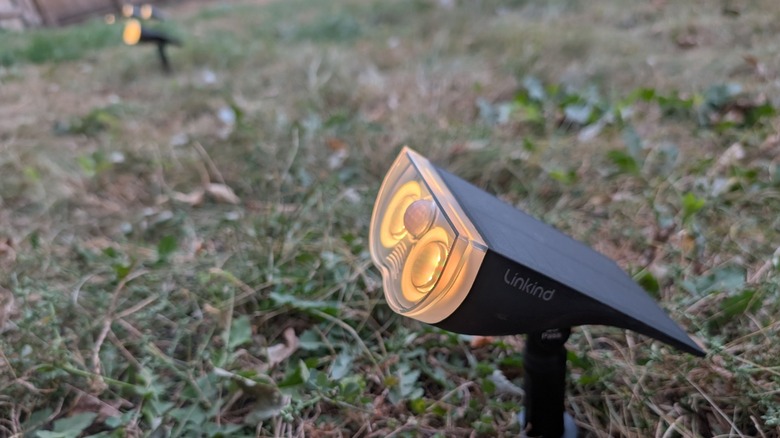Linkind Smart Solar Spotlight SL5 Review: An AiDot Connected Holiday Is Just The Beginning
- Simple, quick setup
- Extensive control options in AiDot app
- Waterproof
- Robust build
- Ground stake and wall install options both included
- Lack of 3rd-party connectivity options
- Requires AiDot account for full functionality
- AiDot app includes ads to sell other AiDot hardware
We may receive a commission on purchases made from links.
Decorating your house or apartment balcony for the holidays needn't be a laborious chore. We're at the point in solar power and wireless control technology where we can get relatively affordable decorations (in LED lighting) that'll provide a base for every celebration-worthy event your neighborhood can throw at you. With the Linkind Smart Solar Spotlight SL5 you have a powerful, cost-effective, and environmentally friendly solution on your hands.
Linkind Smart Solar Spotlight SL5s come in packs of 2, 4, 6, and 12. Once you plant one of these spotlights in the ground (or affix it to your railing or wall) you'll realize why they aren't sold individually. One is fun, but once you start controlling two or more of these lights, things start to get interesting.
In order to test this product properly, AiDot/Linkind (Linkind is an AiDot company, mind you — that's why it works with the AiDot smart control system) provided two packs of 6 Linkind Smart Solar Spotlight SL5, the lot of which I've planted around my yard and have been testing all functionality with the official AiDot control app for a week.
Unboxing and Installation
In the box — assuming you get the 6-pack like I have here — you'll find a bunch of individually packaged lights (lamp, thumbscrew, and base), ground stakes, and packs of Phillips-head screws. Assembling one single light will take you about 30 seconds once you recognize what part goes where.
There are no cords because each light has its own built-in solar panel. If you plan on staking all of your lights into the ground, you could go from unboxing to fully installed in 10 minutes, if you really wanted to. If you're looking to install each light into a wall with its included pair of screws, your installation time might ramp up an extra couple of minutes per light — but really, the whole process will take no time at all.
Connecting each light to the AiDot app is similarly simple — reach the "add device" screen on your phone, turn the lights on, and watch them appear on your screen. They can all be added together at once, or each one individually. From there you can control each light individually or put them all together in a group for control as simple or as intricate as you'd like to make it.
Solar Power
Each light has its own solar panel (made with PET/Monocrystalline Silicon), and no work is required on your part to make said solar panel work. Each light just works, right out the gate. When the sun rises, it sends sunlight (photons) to each solar panel where it's converted to electrons and stored as electric power in the device's rechargeable battery.
It's important to recognize that modern science has not yet produced a battery for consumers that will last forever. It is unlikely, however, that you'll be using any one of these lights long enough that its internal battery will no longer hold a charge. We're talking years and years of use before we start to see a change, as is true with any other rechargeable battery you're currently using.
Thus far the amount of solar power we're storing up during the day has not run out through the night — these lights will stay on as long as you'll likely need them to, regardless of how long your outdoor disco party lasts.
AiDot App for lighting control
AiDot has a robust control app available for a wide variety of smart products. If you started your smart device collection with something like a Ring Spotlight, you might want to turn back now — AiDot is fairly locked in to an all-AiDot ecosystem. If this is your first smart light device, AiDot will have you covered for basically any other smart home device your heart might desire.
Once your lights are connected, you'll be allowed to control each light individually or batch them together to command them all at once. Each light's control page includes options for Brightness, Color, Presets, DIY, Music, Energy Saving, and Modes (Motion Mode, Luminance Detection, or Light Mode).
The Modes system also includes an optional timer for each light. Energy Saving is represented by a single toggle which doesn't seem to do much other than dim a light to extend its usage time — but it certainly works to that end. The DIY system allows you to create custom effects (dynamic or static) with flashing colors in the order you like, dynamic effects (gradual change, breathe mode, or random mode), and fading time.
Otherwise you're rolling with Light, Luminance, Music, or Motion. Light Mode is the most basic, allowing you to keep a light on as long as you like. Luminance Detection uses each device's onboard light sensor to tell it to turn off in the daytime and turn on when it starts to get dark at night. Motion Mode turns each light on "when its dark and motion is detected." I have several lights set near my back door now so that when I let my dog out at night, the lights activate one at a time as he runs out the back door — one, then another, then another. You can also use these lights to supplement your security light and camera setup – so long as you're not planning on pairing AiDot and non-AiDot devices in the same app.
I'll also be using these lights later this month (it's mid-October 2024 when I'm writing this review) to add plentiful ambiance to the front and side of my house in anticipation of trick-or-treaters. Given the variety of presets available in the app, my haunted house will be more monstrous than it's ever been before.
Music and Presets
The "Music" feature allows you to control the brightness and color of each light according to the audio picked up by your phone. You'd be forgiven if you swore you'd seen a music-reactive smart lighting system like this before — like Nanoleaf, for example — but when it works, it works!
You'll need to grant Microphone Permission to the app, but once you do, your lights will react to what your phone can hear. You can adjust the general "Beat of Rhythm" (Calm, Smooth, Medium, Lively, Rapid, Custom, or Auto), minimum and maximum brightness of your lights, fading, color change speed, and sound sensitivity. The app includes access to a wide variety of presets for Music and a wider variety of options for non-music Presets.
I wish the app was able to connect on a software level to apps like Spotify — or that the app would play MP3 files, at least — but using my smartphone as a microphone for this system makes the most sense otherwise. I only wish I didn't need to leave my smartphone out where it can hear the music in order for the Music system to work.
Presets are also joined by Automations — many of which require that you use AiDot devices to work. There's a Forecast Alert, for example — you'll need the AiDot All Air Purifier and Indoor Lights to make that one work. Many work with the bare minimum, however — the app can access local weather information and local public alerts (pollen alert, wildfire alert) to act as a trigger in an automation you create.
I also wish the app were able to connect with other 3rd-party apps like IFTTT for automations. As it is now, it works fine for what it presents, but I can't help but wish for a wider range of possibilities.
Active App: Mostly Good News
The only thing about the app that you might not enjoy is the Shop feature since it'll try to entice you to buy more AiDot products — but beyond that, and the fact that you need to sign up for an AiDot account to access full functionality, the app works great.
It's important to note, here, that having an AiDot account is free. There aren't any subscription costs or hidden fees — I'm just unenthusiastic about needing to sign up for another account for anything at this point in my life, to be entirely honest.
You'll also find a surprisingly active Community element in the app. While normally I'd suggest that a social media-like element in an app like this is a bad idea, here it seems to be pretty functional. People are posting videos and photos of their lighting setup, celebrating Halloween, and getting into the communal "smart lights and such can be fun" spirit.
AiDot also does a good job of making it feel as though they're going to continue to support these devices for a long time into the future based solely on how active and updated their app is. Right now, for example, there's a Halloween mini-game, there are Halloween presets for your lights, and plenty of users are sharing photos and videos of their Halloween lighting setup in-app.
Wrap-up
These lights are extremely simple to use and very fun to play with. If I were in a rough neighborhood, I might worry about them being stolen or damaged, but that's no different than it'd be with any other lawn-based lighting I could be using. Meanwhile, I appreciate the option to install each light with their included screws — just in case I want to turn my wooden fence into a seasonal light show.
AiDot's Linkind Smart Solar Spotlight SL5 units are sold in packs of 2, 4, 6, and 12. The review above utilized two identical packs of six. Standard pricing for a single set of 6, according to the AiDot store website, is $135.99, but as this review is set to go live, there's a discounted price in play, putting the 6-pack price at around $72. You'll find a similar price at the Linkind store online.
In the Linkind store on Amazon a 6-pack of SL5 lights will cost you approximately $126. You could instead get a 4-pack for around $115, or a 2-pack for about $50. At the time this review is set to be published, there's also a 30%-off coupon in the Linkind store (you'll see the button on the store listing if it's still there) that'd turn your $126 into closer to $88 (before shipping and taxes and "regulatory fees"). At around $15 per light, a 6-pack of these devices is well worth the cash.
